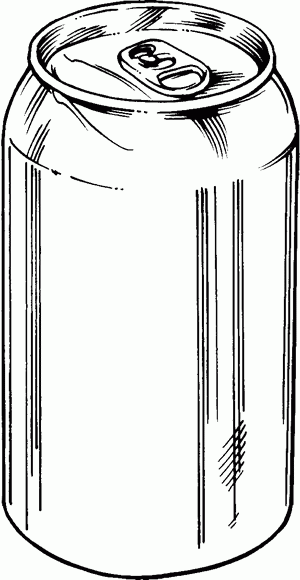The Real Way To Increase Your Size
In today’s world, it’s more important than ever to be happy with your body. But if you’re not satisfied with your size, there are a few things you can do to change it. In this article, we’ll discuss the real way to increase your size, including methods, nutrition, exercise, and recovery.
There are many different ways to increase your size, but not all of them are effective. Some methods, such as taking supplements or using steroids, can be dangerous and have negative side effects. The real way to increase your size is to focus on healthy habits that will help you build muscle and gain weight over time.
Overview of Body Measurements
Body measurements are essential for tracking growth, assessing health, and designing clothing. They provide a comprehensive understanding of an individual’s physical dimensions and proportions.
Body measurements are classified into two main types:
- Linear Measurements: These include height, weight, and circumferences (e.g., chest, waist, hips).
- Girth Measurements: These measure the circumference of specific body parts (e.g., bicep, thigh, calf).
Body measurements are widely used in various fields, such as:
- Healthcare: Monitoring growth, assessing nutritional status, and diagnosing certain medical conditions.
- Fashion: Designing and fitting clothing, ensuring a proper and comfortable fit.
- Fitness: Tracking progress, setting goals, and evaluating the effectiveness of exercise programs.
Methods to Increase Size
In this section, we’ll delve into a comprehensive guide on how to increase your size effectively. We’ll cover various methods, discussing their effectiveness and providing real-life examples to inspire your journey.
Before we dive into the specifics, it’s crucial to set realistic expectations. Increasing size takes time and consistent effort. There’s no magic pill or quick fix. But with the right approach and dedication, you can achieve your desired results.
Progressive Overload
Progressive overload is a fundamental principle in size training. It involves gradually increasing the weight or resistance you lift over time. As your body adapts to the current weight, it becomes stronger and requires a greater challenge to continue growing.
The key is to push yourself without overdoing it. Start with a weight that’s challenging but allows you to maintain good form. As you get stronger, gradually increase the weight or resistance by small increments.
Compound Exercises
Compound exercises are exercises that work multiple muscle groups simultaneously. These exercises are highly effective for building size because they allow you to lift heavier weights and stimulate more muscle fibers.
Some of the best compound exercises include squats, deadlifts, bench press, and overhead press. By incorporating these exercises into your training routine, you can maximize your size gains.
Proper Nutrition
Proper nutrition is just as important as training when it comes to increasing size. Your body needs adequate calories, protein, and other nutrients to repair and rebuild muscle tissue.
Make sure to consume enough protein, which is essential for muscle growth. Aim for around 1.6-2.2 grams of protein per kilogram of body weight per day.
Adequate Rest
Rest is often overlooked but plays a crucial role in size gains. During sleep, your body releases hormones that promote muscle recovery and growth.
Aim for 7-9 hours of quality sleep each night. Create a relaxing bedtime routine and make sure your bedroom is dark, quiet, and cool.
Supplements
Supplements can be a helpful addition to your size-building journey, but they’re not a magic bullet. They can provide extra nutrients and support recovery, but they should never replace a well-rounded training and nutrition program.
Some supplements that may be beneficial for increasing size include protein powder, creatine, and beta-alanine.
Case Studies
Here are a few case studies of individuals who have successfully increased their size using the methods discussed above:
- John, a 25-year-old male, gained 20 pounds of muscle in 6 months by following a progressive overload training program, consuming a high-protein diet, and getting adequate rest.
- Mary, a 30-year-old female, increased her bench press from 95 pounds to 135 pounds in 12 weeks by incorporating compound exercises into her routine and focusing on proper form.
- Peter, a 40-year-old male, lost 30 pounds of fat and gained 15 pounds of muscle in 8 months by combining resistance training, a calorie-controlled diet, and supplementation with protein powder and creatine.
Nutritional Considerations
Nutrition plays a pivotal role in increasing size, as it provides the essential building blocks and energy required for muscle growth. A well-balanced diet should include adequate amounts of protein, carbohydrates, and fats to support muscle development.
Here’s a sample meal plan for individuals aiming to increase their size:
- Breakfast: Oatmeal with fruit, nuts, and protein powder
- Lunch: Grilled chicken sandwich on whole-wheat bread with vegetables
- Dinner: Salmon with brown rice and steamed vegetables
- Snacks: Protein shakes, Greek yogurt, fruit, nuts
Macronutrients
Macronutrients are essential for muscle growth and recovery. Here’s a breakdown:
- Protein: Builds and repairs muscle tissue
- Carbohydrates: Provide energy for workouts
- Fats: Support hormone production and muscle recovery
Exercise and Training

Exercise and training are essential components of any plan to increase your size. They provide the stimulus that your muscles need to grow and develop. Without exercise, your muscles will not be challenged and will not have the opportunity to grow.
There are many different types of exercises that you can do to increase your size. Some of the most effective exercises include compound exercises, which work multiple muscle groups at once. These exercises include squats, deadlifts, bench press, and overhead press.
In addition to compound exercises, you should also include isolation exercises in your workout routine. Isolation exercises target specific muscle groups and help to build muscle definition. Some of the most effective isolation exercises include bicep curls, tricep extensions, and leg extensions.
When creating a workout plan, it is important to consider the principles of progressive overload and recovery. Progressive overload means gradually increasing the weight or resistance you are lifting over time. This will challenge your muscles and force them to adapt and grow. Recovery is also essential for muscle growth. Make sure to get plenty of rest between workouts and to eat a healthy diet to support your recovery.
Workout Plan
The following is a sample workout plan that you can use to increase your size:
Monday:
* Squats: 3 sets of 10-12 reps
* Bench press: 3 sets of 10-12 reps
* Overhead press: 3 sets of 10-12 reps
* Bicep curls: 3 sets of 10-12 reps
* Tricep extensions: 3 sets of 10-12 reps
Tuesday:
* Rest
Wednesday:
* Deadlifts: 3 sets of 10-12 reps
* Leg press: 3 sets of 10-12 reps
* Hamstring curls: 3 sets of 10-12 reps
* Calf raises: 3 sets of 10-12 reps
Thursday:
* Rest
Friday:
* Back squats: 3 sets of 10-12 reps
* Lunges: 3 sets of 10-12 reps per leg
* Rows: 3 sets of 10-12 reps
* Pull-ups: 3 sets of 10-12 reps
Saturday:
* Rest
Sunday:
* Active recovery: Go for a walk, bike ride, or swim.
This is just a sample workout plan. You may need to adjust it based on your fitness level and goals. It is important to listen to your body and rest when you need to.
Recovery and Regeneration
Recovery and regeneration are crucial for muscle growth. Intense training breaks down muscle fibers, and during rest, they repair and rebuild, becoming stronger and larger. Prioritize adequate sleep, around 7-9 hours per night, as it’s essential for muscle recovery and growth hormone production. Rest days allow muscles to recover and prevent overtraining. Manage stress through techniques like yoga, meditation, or spending time in nature, as stress can interfere with recovery.
Supplements for Recovery
Supplements can aid recovery, such as protein powder for muscle repair, creatine for energy production, and BCAAs to reduce muscle breakdown. However, always consult a healthcare professional before taking supplements.
Monitoring Progress and Setting Goals
Tracking your progress and setting realistic goals are crucial for successful size increase. Regularly assessing your progress allows you to identify areas for improvement and stay motivated. Realistic goals help you avoid discouragement and ensure your efforts are sustainable.
Metrics for Measuring Progress
Use the following metrics to measure your progress:
– Body weight: Monitor your weight regularly to track overall size gains.
– Body fat percentage: Measure your body fat percentage to assess fat loss and muscle gain.
– Muscle circumference: Use a tape measure to track the circumference of your arms, legs, and chest.
– Strength gains: Record the weight you can lift during exercises to measure strength improvements.
– Energy levels: Pay attention to your energy levels during and after workouts. Increased energy indicates progress.
Seeking Professional Guidance
Consider seeking guidance from a qualified fitness professional or nutritionist for personalized advice and support. They can help you set realistic goals, create a tailored plan, and monitor your progress effectively.
Common Queries
How long will it take to see results?
The amount of time it takes to see results will vary depending on your individual circumstances. However, most people start to see results within a few weeks of following a consistent exercise and nutrition plan.
What is the best way to gain weight?
The best way to gain weight is to eat a healthy diet that is high in protein and calories. You should also make sure to get regular exercise, which will help you build muscle and burn fat.
What are the best exercises for increasing size?
The best exercises for increasing size are compound exercises that work multiple muscle groups at once. These exercises include squats, deadlifts, bench press, and overhead press.





